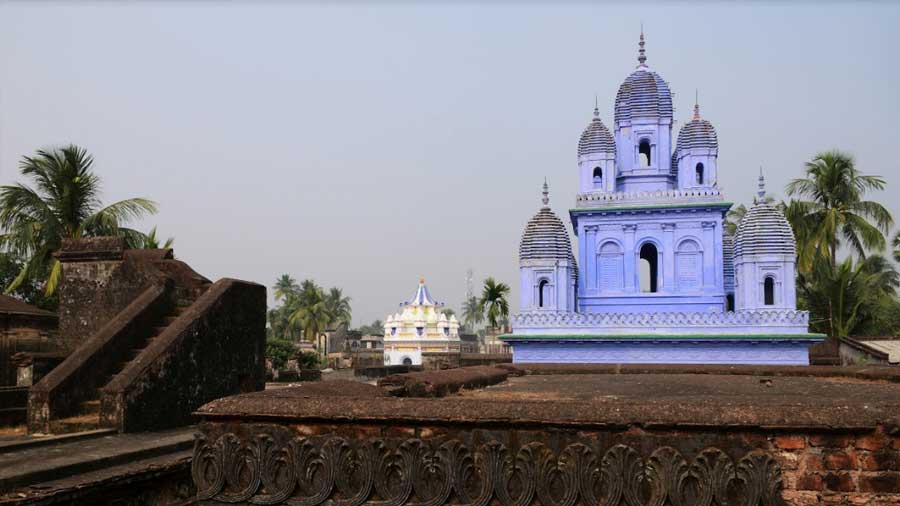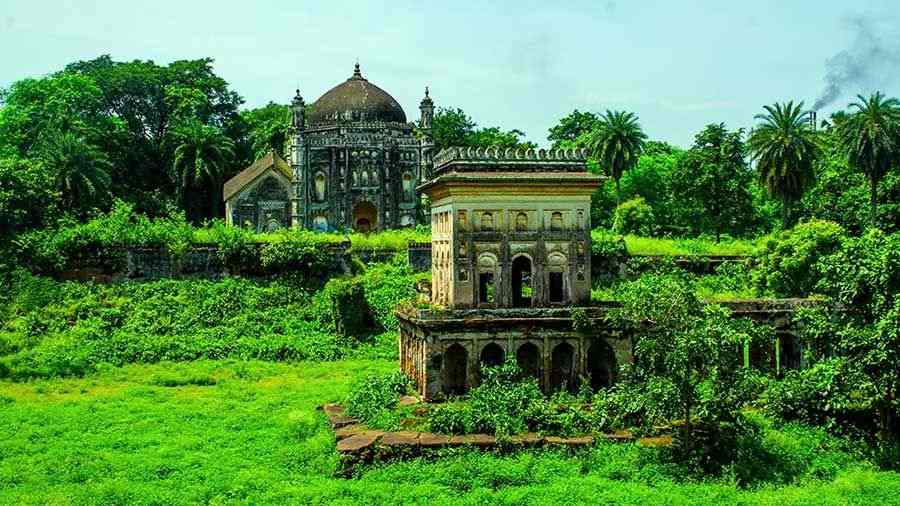A weekend drive during Bengal’s milder weather days is the perfect time to discover the less-explored parts of the state. One such destination is Baidyapur in East Burdwan (Purba Bardhaman). Age-old mansions, sweeping Durga dalan and historic temples still dominate the landscape of the village of Baidyapur, just over 80km (about two hours) northwest of Kolkata between Gurap and Ambika Kalna.
Hearing the name Baidyapur, one would assume that the region is a stronghold of the Baidya community, once known for their expertise in Ayurvedic medicine. While that was true at a certain time, now there are no baidya families residing in the village, where most residents are descendants of old Brahmin and Tili families.
Building a family legacy
Until the end of the 17th century, Baidyapur was just a nondescript village, the only built heritage being a huge temple built in the rekh deul architectural style. In 1680, a Tili gentleman named Haradhan Nandi, with familial roots in East Burdwan’s Memari region, settled in the village with his family and began a small business dealing with food grains.
About a century later in 1795, a descendant of the Nandi clan bought large tracts of land in Malda and established a zamindari. The family’s fortunes grew with every passing year and by the mid-1900s, the family had amassed a wealth of Rs 5,00,000 from their estate. The family lived in Baidyapur for a very long time, and various members built several temples, a Durga dalan and a kachari house or administrative building in the village, during different time periods. Today, these form a significant part of the built heritage of Baidyapur.
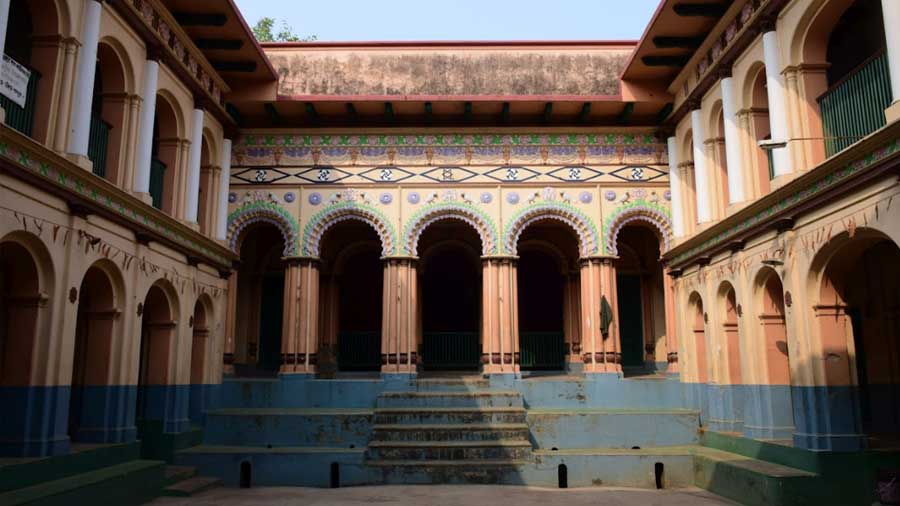
The Thakurdalan of the Nandi family Thakurbari, which houses a temple of Rajarajeshwar in its inner sanctum
Temple trail
The first significant structure to see, as soon as one enters the village, is a pair of aatchala temples that stand beside a pipe-making factory. Established by one of the village’s old families, the Kundus, these terracotta facades are etched with scenes inspired from nature,everyday living and important events of the time. The first structure has an abundance of floral motifs, whereas at the greatly-decayed panels on the base of the other, one can see hunting scenes, soldiers with guns and foreign warships.
Perhaps the most famous of Baidyapur’s temples is the one constructed in the deula style — the Jora Deul twin temples. This style is characterised by long, shikhara-like structures. According to the work of famous Indologist David McCutchion, who closely studied terracotta in Bengal, the Jora Deul was built in 1598, though the Archaeological Survey of India’s (ASI) board outside lists the year as 1550. The structure is a rekh deul, or a single temple with an inner sanctum, and has a jagamohan or assembly hall. The inner sanctum is 30 feet high, and the jagamohan is around 20 feet. The fact that the structure is a single temple has been accredited by local heritage researchers and writers like Jaggeswar Chowdhury and Sanat Kumar Bandopadhyay.
The Deul temple’s terracotta etching mainly comprises floral motifs. However, one can also see a panel depicting the battle between Ram and Ravana. A unique feature of the Jora Deul temple, which is older than the temples of Bishnupur, is that the human figurines in the terracotta motifs have been carved with a natural flow that is not found in the terracotta work of the 18th and 19th centuries.

The panels at Baidyapur Deul showcasing (from top down) the Foundation Stone, the battle between Ram and Ravana and Floral motifs
A little way from the Jora Deul is a large, nine-pinnacled, almost 25-foot wide raasmancha. According to eminent researcher on Burdwan, Jaggeswar Chowdhury, the mancha, also built by the Nandi family, was established in 1838. With age the original character of the historical structure has altered, and the colourful facade seen today has been restored and painted in shades of white, gold, green and blue. A small dolmancha stands to the side of, and on the opposite side is a nondescript Buro Shiva temple where prayers are offered throughout the year.
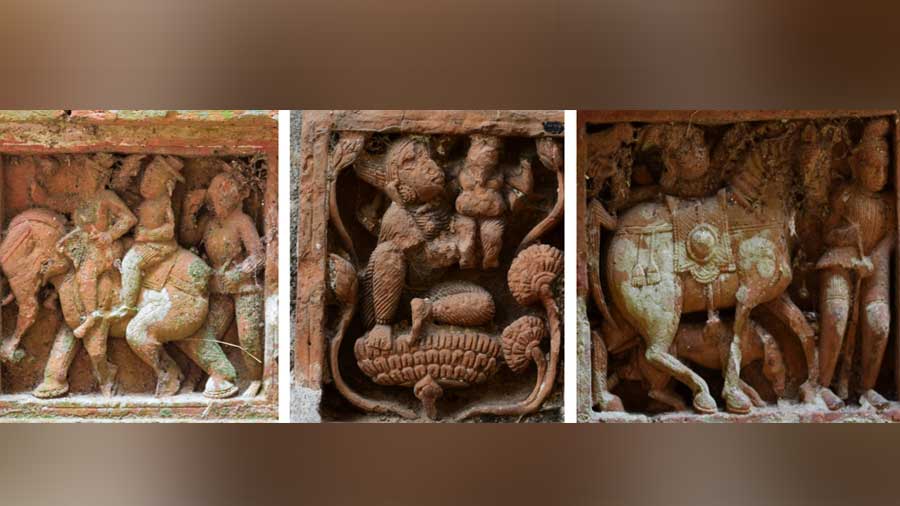
Terracotta panels from different temples of Baidyapur. (L to R) A European on an elephant; Kamale Kamini as described in the Chandi Mangal-Kāvya; Armoured horse
Taking a right turn from this temple, one arrives at the compound of the massive Brindavanchandra temple. The flat-roofed structure with nine pinnacles showcases excellent stucco work. According to the foundation stone, this temple was established in 1845 and built by Bhagiratha, Durlabharam and Gangadas Nandi The three men were sons of Shishuram Nandi, who was the grandson of the patriarch of the Nandi clan, Haradhan Nandi. Brindavanchandra is one of the family deities of the Nandi family.
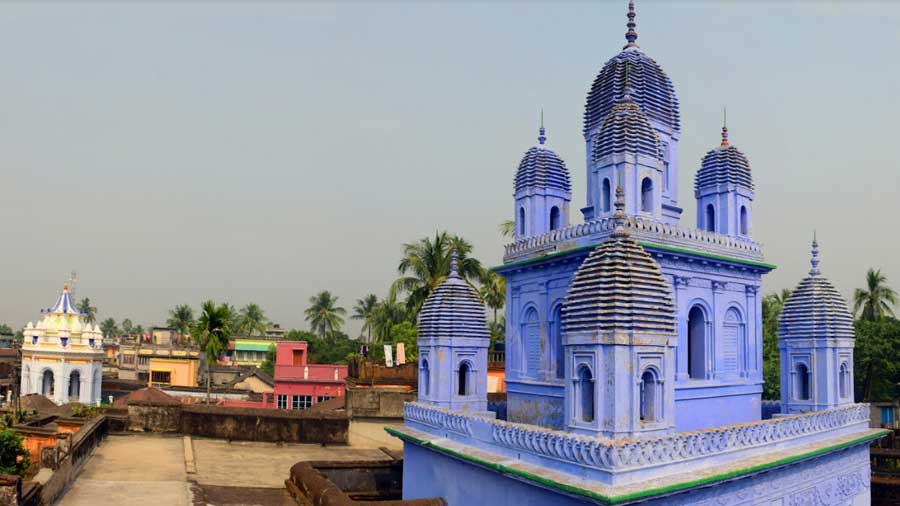
The Brindavanchandra Temple with the raasmancha visible in the background
The walk from the Brindavanchandra temple to the Nandi thakurbari is a short one through a narrow lane dotted with old houses. Along the way, on this lane stands an approximately 200-year-old temple, with a traditional five-pinnacled facade adorned in terracotta panels.
The built heritage of a ‘zamindari’ home
Outside the family’s thakurabari is a nahabatkhana — a traditional gateway or entrance that was also usually designed with a charchala structure and often used by musicians who performed at the thakur dalan. The Durga dalan inside sports beautiful stucco work and a temple of the other family deity Rajarajeshwar sits in the inner sanctum of the thakurbari.
Along a lane outside the thakurbari are two small temples, the Navaratna and the Atchala. The Navaratna temple was erected by Joydev Nandi in 1602 in memory of his mother, while the Aatchala temple was built in 1853. Most of the pinnacles on the former have fallen off and many of the terracotta panels on both are worn out but some of the terracotta panels at the bottom of the Aatchala temple are still very prominent.
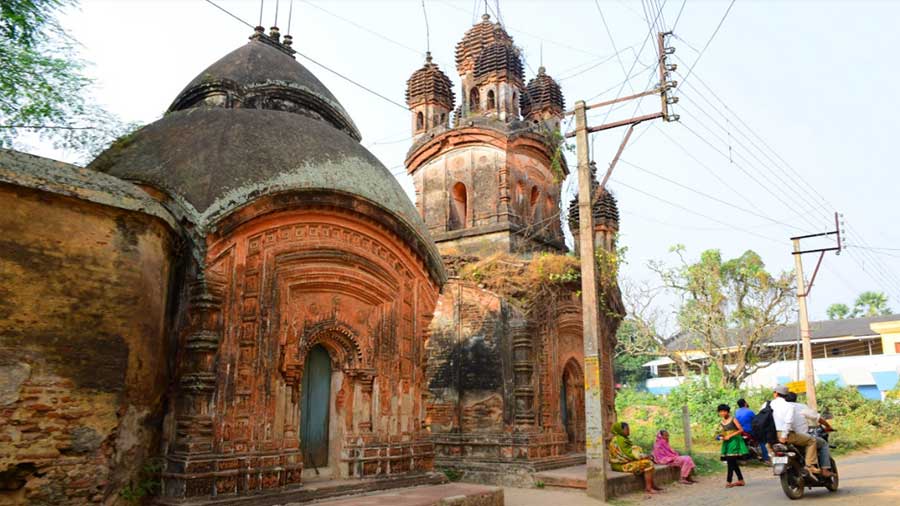
The Aatchala and Navaratna temples at Baidyapur
Opposite the temples stands a mansion with colonial-influenced architecture. There’s no clear indication who the mansion belonged to, and visitors exploring the structure will stumble across a surprising find — a temple with fine terracotta motifs, perched between the walls of the house.
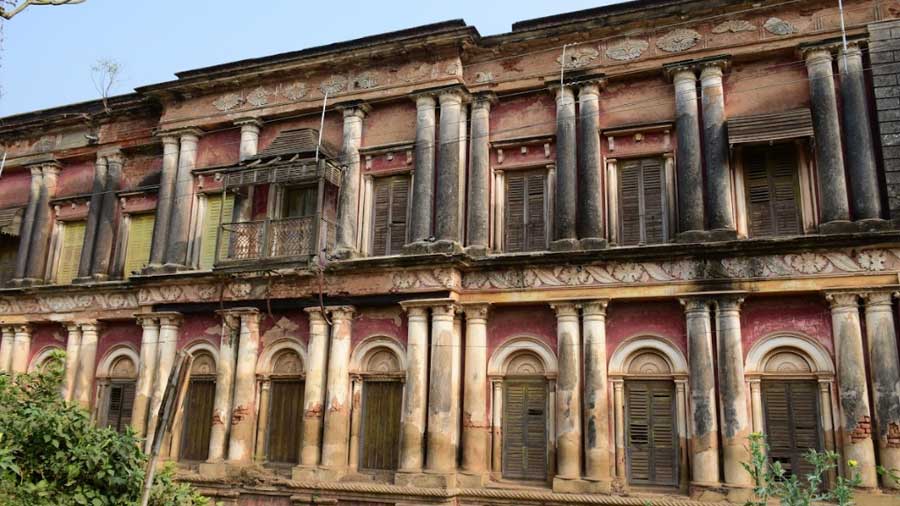
One of the several old mansions at Baidyapur
On the other side of the Nandi’s sprawling thakurbari, on the road next to the Pancharatna temple is the Nandi's kachari bari, or the administrative centre of the zamindari. The historic structure which now has exposed brick is open to the public and has a Shiva temple inside.
The other side of the street has a similarly old building with Corinthian pillars, which remains closed to visitors —this used to be the Nandi’s baithak khana. If one can get in touch with a descendant of the family, they are usually gracious enough to show visitors inside. The first floor is occupied by a huge room with stained-glass windows, small chandeliers and some age-old paintings.
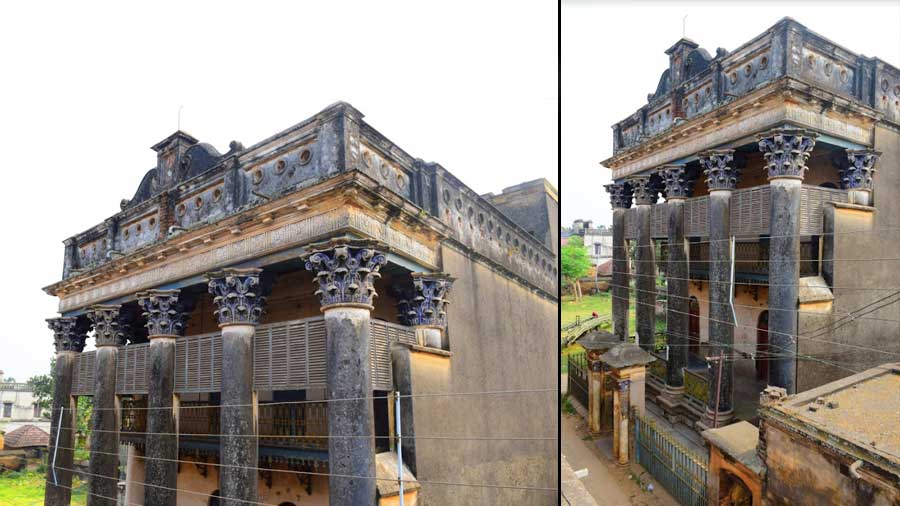
The Baithak Khana of Nandi family
How to get there
The closest station to Baidyapur is Boinchi, which falls on the Howrah-Burdwan Main line. A 90-minute train ride from Howrah takes visitors to Boinchi, from where local conveyances are available to reach Baidyapur.
If travelling by road, take the Durgapur Expressway via Dankuni and Singur and get on the service road on the left before Gurap. Take the right turn to Boinchi, and head straight to Baidyapur after crossing the Boinchi railgate. Past the Baidyapur Ramkrishna Vidyapith, steer right from the main road onto the narrow Baidyapur Old Road that goes into the village.
Where to eat
The village is not a known tourist spot and does not have options for breakfast or lunch. It typically takes two to three hours to check out the heritage structures at Baidyapur, so one can plan a breakfast and lunch stop on the many eateries dotting the Durgapur Expressway.
Baidyapur is famous for its makha sandesh. Make sure to pack some home from the local Raj Rajeshwar Mistanna Bhandar located on the narrow lane to Nandi's thakurbari.
